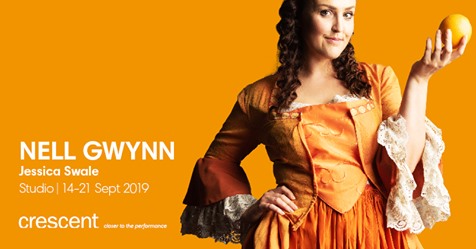
CHOREOGRAPHER Matthew Bourne’s talent is the ability to take a traditional ballet narrative and turn it on its head – and his gothic version of classical ballet favourite ‘Sleeping Beauty’ is no exception.
Cue vampire fairies, a minx of a princess, a sexy gamekeeper (a la Lady Chatterly’s Lover) and a scary ‘bad fairy’ with growling hench men.
From curtain up, Bourne’s long-time collaborator Lez Brotherston carries the gothic theme through with imaginative, playful and sumptuous sets that perfectly echo Bourne’s vision for this interpretation.
The ballet starts in a traditional way, with the birth of a much longed for baby to the King and Queen.
Princess Aurora is introduced as a larger-than-life puppet baby, so brilliantly and humorously manipulated by the puppeteer (for whom I could find no credit listed) that the audience erupt into a chorus of ‘ahs’.
It’s clear from the start that this is no pious princess as we see first the baby and then fiesty teenage Aurora (danced with a delightful mix of innocence and sass by Ashley Shaw) leading the palace servants a merry dance.
At night, the princess is watched over by a band of vampiric, steam-punk fairies, lead by Count Lilac (a passionate Paris Fiztpatrick) who protect her from the designs of evil fairy Carabosse in a chilling portrayal by Ben Brown.
In this sequence, Bourne cleverly uses a travelator (like you get in airports) so the fairies appear to glide magically.
At Aurora’s 15th birthday party, we see her flirting with the young gamekeeper Leo (charismatic Andrew Monaghan) in a pas de deux that’s full of youthful lust and promise, the start of a romance that becomes a driver for the narrative.
Carabosse’s son Caradoc continues her legacy – it’s payback time as he first leads Aurora in a seductive dance and then gives her a glass rose on which she pricks her finger, poisoning her.
As with the traditional story, the good fairy Count Lilac intervenes and puts a spell on Aurora so she will sleep for 100 years until woken by a kiss.
But Bourne is never going to let his heroine simply awaken when kissed by some random stranger – prince or not – so here’s a classic Bourne twist – our gamekeeper Leo can live for 100 years and wake his love, but only if he also become a vampire fairy!
Act two brings us 100 years forward, to 2012 (this is a 10th anniversary revival production) and young Leo has sprouted his vampire fairy wings as he battles his way through the forest to find his girl.
But the evil Caradoc has also fallen in love with the sleeping princess, dancing seductively with her in her dreams as if she was a doll.
At the very moment Leo finds the princess and kisses her, Caradoc seizes her for himself – his dream of having the ‘real’ Aurora now fulfilled.
In the traditional ballet, a large chunk of act two is taken up with a ball with increasingly showy dances, celebrating the return of the princess – here though we are transported to a night club filled with cavorting dancers lead by Caradoc with Aurora.
The red and black costumes and set suggest a darkness and underlying seediness that is played out as we see Caradoc pass Aurora around his men friends. But of course all fairy stories must have a happy ending – and Leo, with the help of Count Lilac, eventually prevails, leaving us with a joyful ending.
There’s no grande jettes, showy pirouettes or corps-de-ballet (the company number’s just 18) in this version, but instead Bourne gives us an earthy, visually enchanting story that returns to the fundementals of a fairytale.
For those who haven’t seen a Matthew Bourne production, this is probably his most accessible ballet, beautifully choreographed to Tchaikovsky’s wonderful and familiar score.
Unlike some of Bournes other productions, there’s nothing too outrageous in the choreography which to me is a slight disappointment, but it’s a delightful and heart-warming watch.
Sleeping Beauty runs at the Birmingham Hippodrome until Sunday, February 11. Click here for times, tickets and more information.

